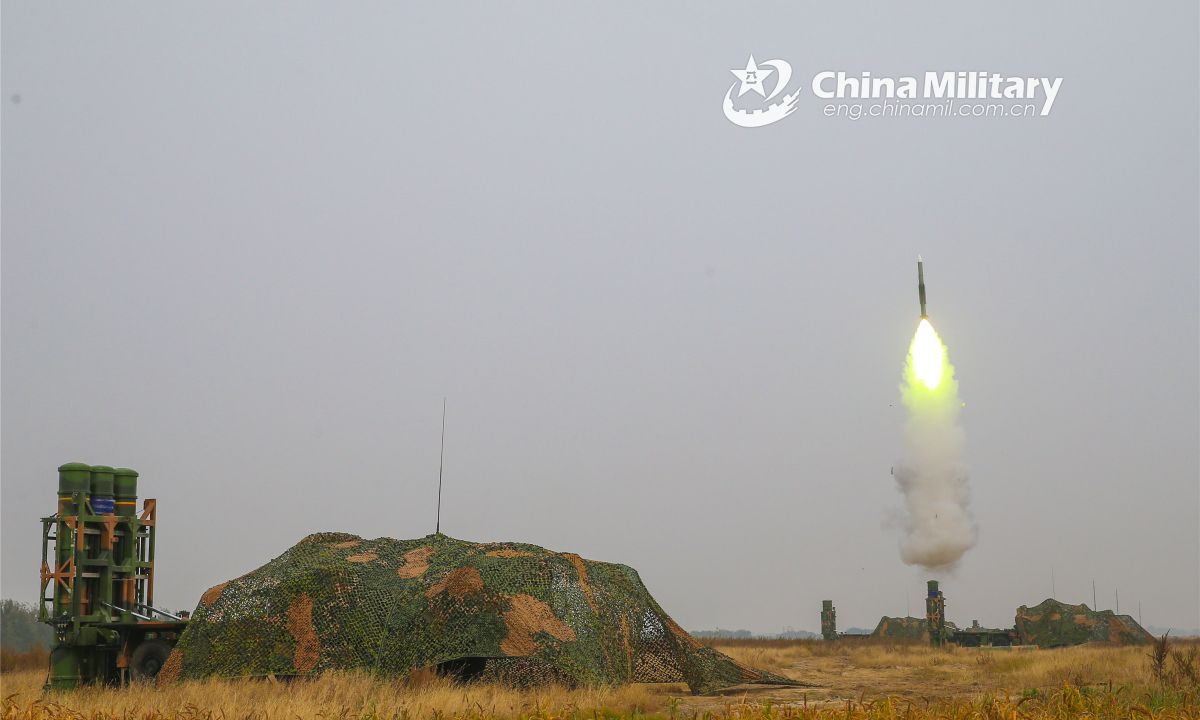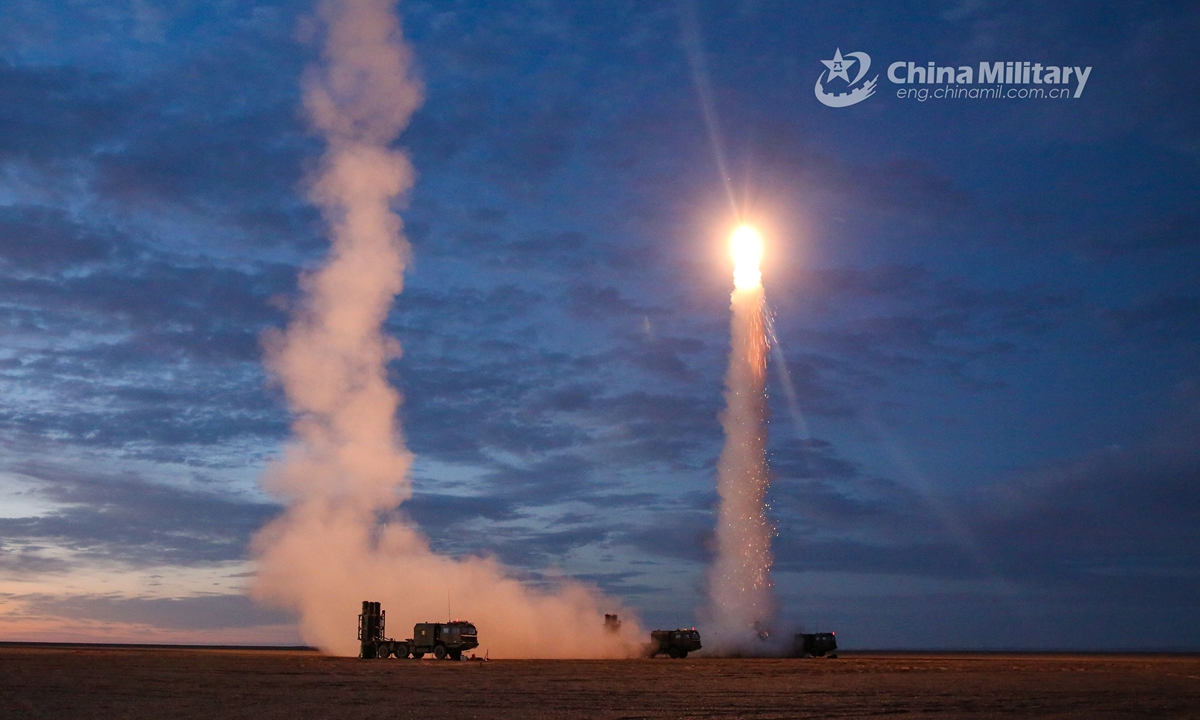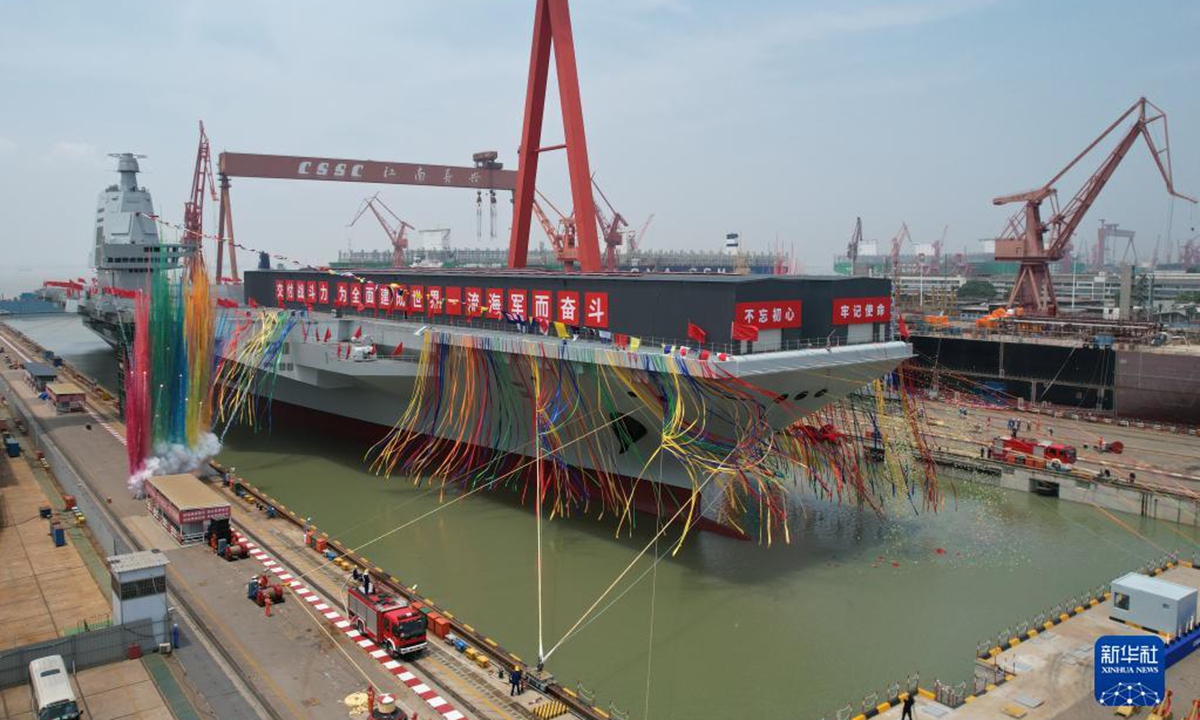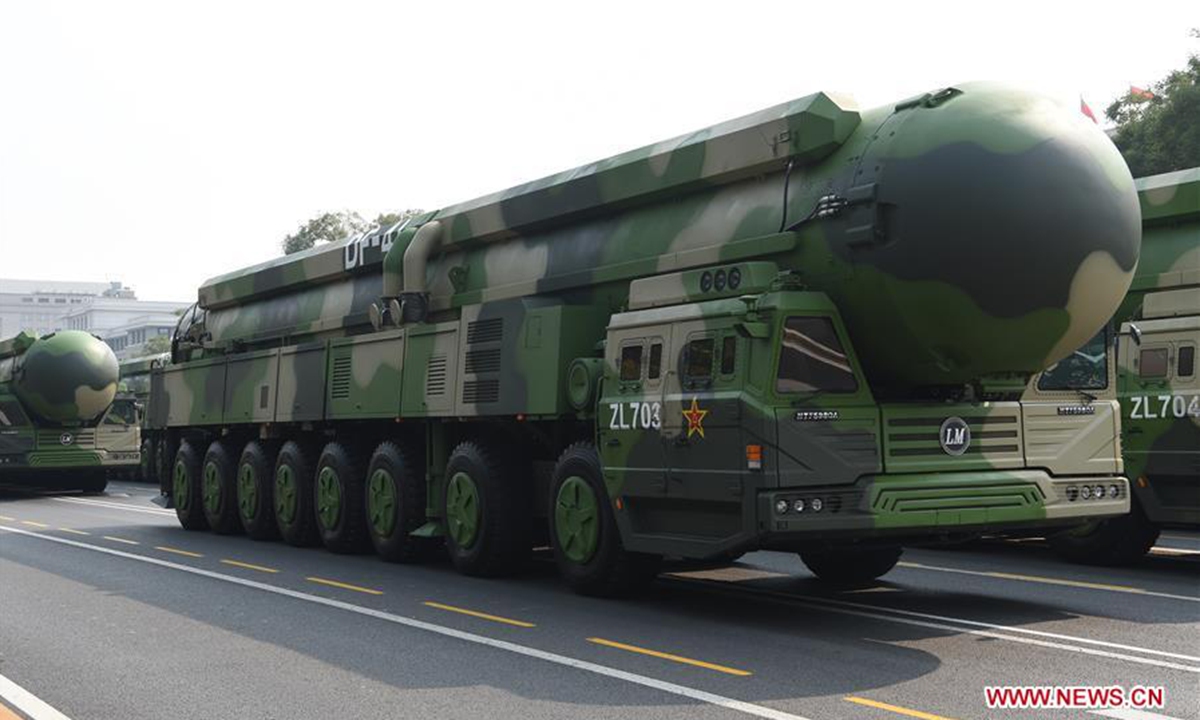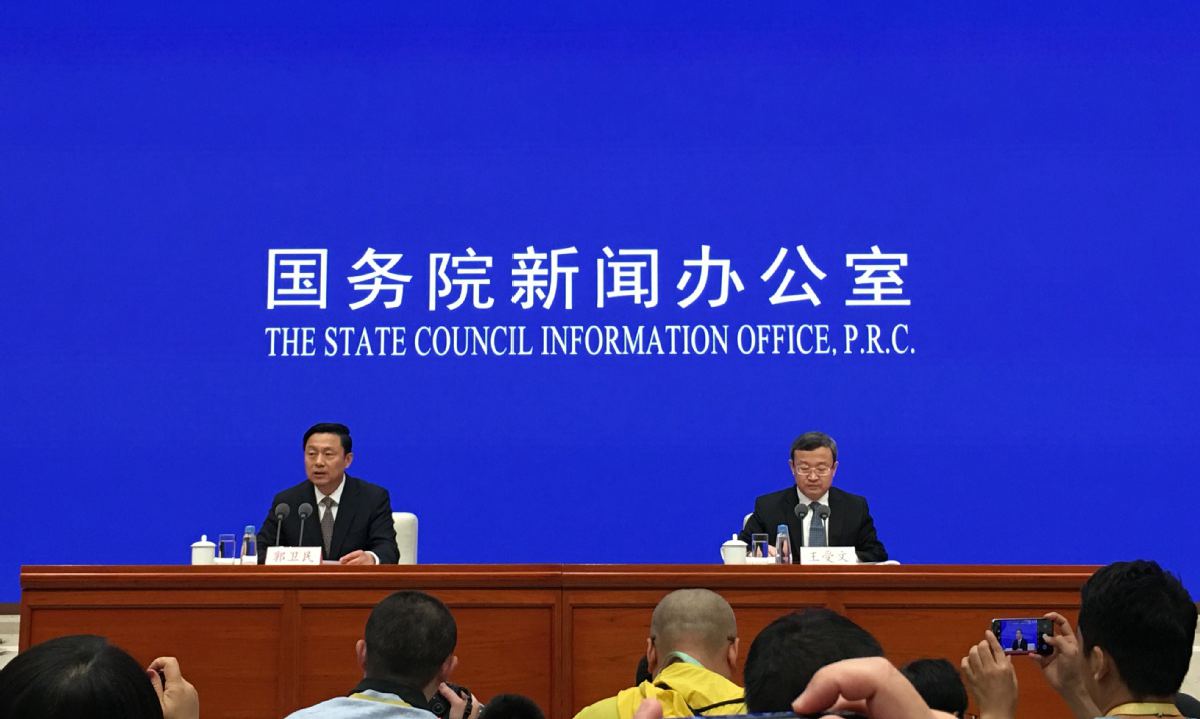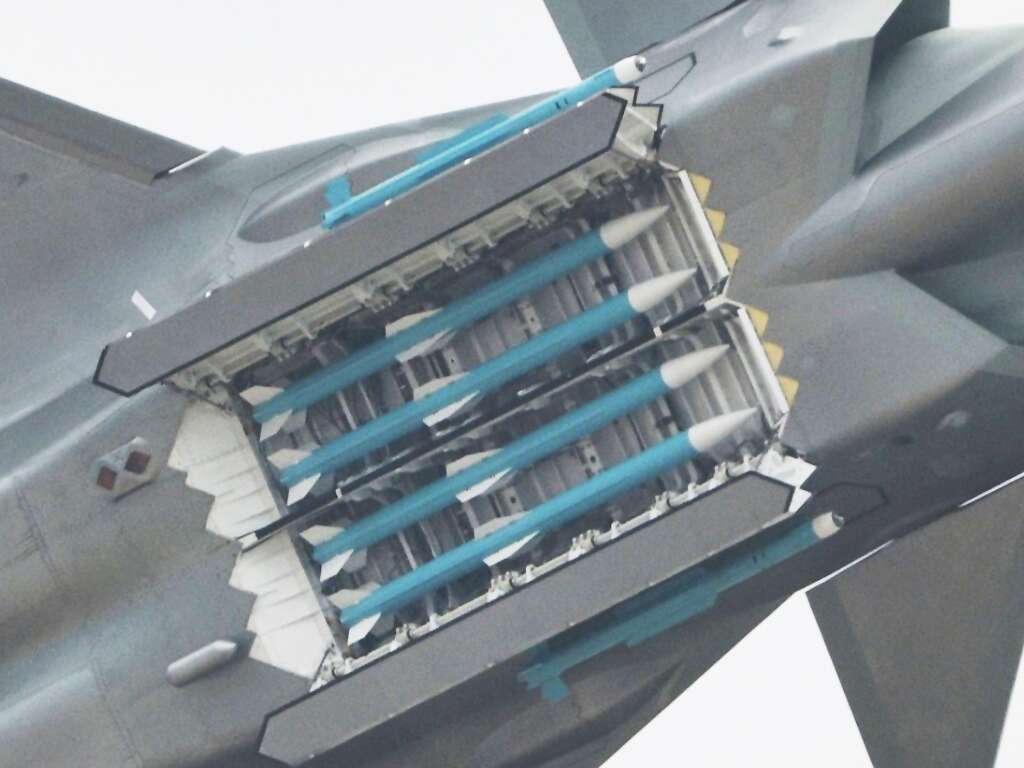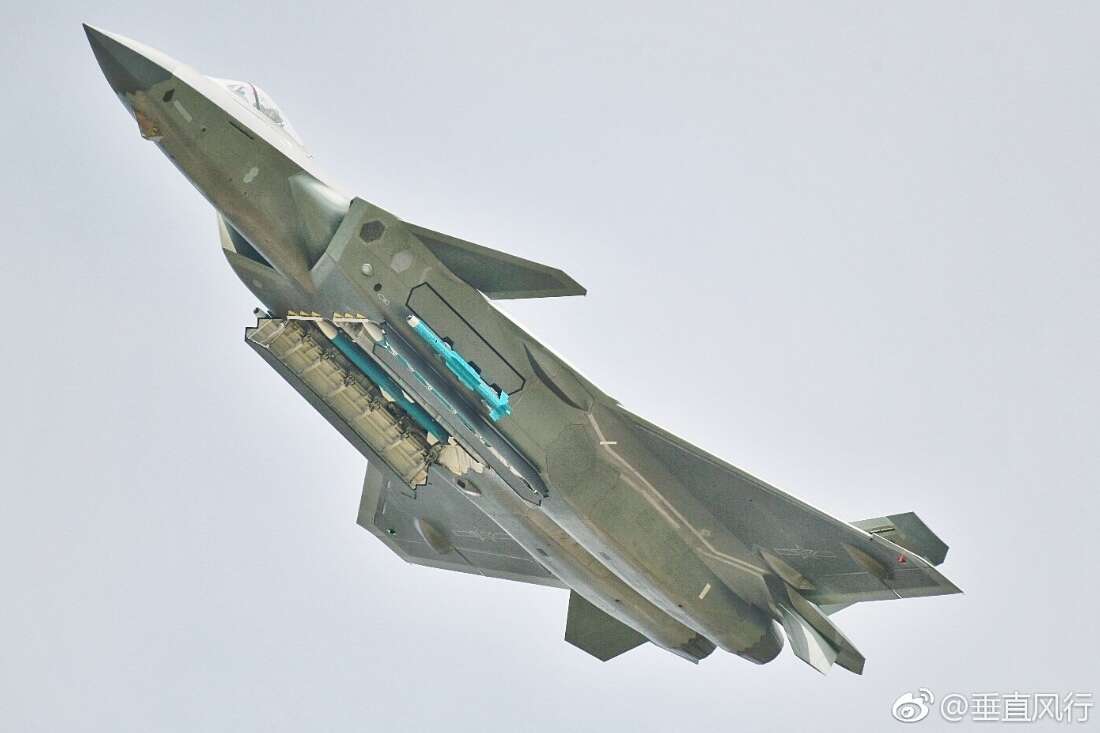 Photo taken on Nov. 21, 2014 shows the scene of the plenary meeting of the 5th Xiangshan Forum in Beijing, capital of China. The two-day Xiangshan Forum focuses on security in the Asia-Pacific region. The biennial event, organized by China Society of Military Sciences, has been held since 2006. It will be held annually starting this year. (Xinhua/Shen Dongdong)
Photo taken on Nov. 21, 2014 shows the scene of the plenary meeting of the 5th Xiangshan Forum in Beijing, capital of China. The two-day Xiangshan Forum focuses on security in the Asia-Pacific region. The biennial event, organized by China Society of Military Sciences, has been held since 2006. It will be held annually starting this year. (Xinhua/Shen Dongdong)
Regional military chiefs hail Beijing's security proposal
 |
Chinese
military academic delegate Wang Yisheng talks to British delegate John
Kingwell (center) and Observer Simon Levey during the Xiangshan Forum
attended by senior officials and academics from Central Asia and the
Asia-Pacific region in Beijing on Friday. PETAR KUJUNDZIC / REUTERS
|
At a glance
• Xiangshan Forum, first held in 2006, and initially staged every two years. Upgraded to an annual event this year.
• About 300 delegates from 47 countries and four international organizations attending this year.
• This year's theme is "Cooperation and Win-Win Build an Asian Community of Common Destiny".
• Held from Thursday to Saturday, the forum discusses regional and maritime security and anti-terrorism cooperation. |
China
proposed on Friday that disputes in the Asia-Pacific region be tackled
by an efficient crisis management and control mechanisms.
The proposal, put forward at a major defense policy forum in
Beijing, won widespread acclaim from military chiefs and leading defense specialists in the region.
They said a liaison system has yet to be established to help the
economically dynamic region tackle looming geopolitical concerns, and
the proposal will help to resolve this.
In an address to the fifth Xiangshan Forum, State Councilor and
Minister of National Defense Chang Wanquan said that China held 2,000 talks or meetings last year with neighbors on border issues.
China seeks to further enhance dispute management procedures, boost
defense cooperation and "strengthen the regional security architecture",
Chang said in a three-point proposal.
Singapore's Defense Minister Ng Eng Hen endorsed Chang's proposal and
underscored the need to build an Asian security framework to set up
meetings and cool any potential tension.
Malaysian Defense Minister Hishammuddin Hussein also backed Chang's proposal.
Yin Zhuo, director of the PLA navy's Expert Consultation Committee,
said Asia-Pacific is "the only region in the world that still suffers
from the woun
ds of the Cold War", and a security mechanism, like that established in
Europe, has yet to be set up.
The forum provides a platform that "transcends different ideologies and involves all regional stakeholders", Yin added.
Some Western analysts have speculated that the China-led forum was
upgraded from an event held every two years to an annual one earlier
this year to steal the thunder from the Shangri-La Dialogue held in
Singapore.
Singaporean Defense Minister Ng told Friday's plenary session that
more opportunities for dialogue should be given to high-ranking military
officials in the region, and meetings such as the Xiangshan Forum help
to keep areas of tension from spiraling out of control.
Zhang Tuosheng, director of the Department of Research at the China
Foundation for International and Strategic Studies, said China is a
major player in the region, and "such platforms do not conflict with
each other because they are working in concert to shape a safer region".
Ruan Zongze, vice-president of the China Institute of International
Studies, said changing mindsets is important, adding that, "It may take
quite a long time to shape a strong and popular belief of win-win
cooperation."
Chang dismissed any connection between China's "justified" defense
budget growth and allegations of "growing assertiveness" by China.
Military modernization "serves China's practical need to secure its own borders" Chang said.
He told the forum, "To defend our own security is a most direct
contribution to security and stability in the Asia-Pacific region."
Andrei Kokoshin, director of the Institute for International Security
Studies at the Russian Academy of Sciences and former secretary of the
Russian Security Council, said the modernization of the People's
Liberation Army is playing a positive role in boosting regional security
and stability.
 By Zhangyunbi China Daily, News Network
Chinese DM addresses Fifth Xiangshan Forum
By Zhangyunbi China Daily, News Network
Chinese DM addresses Fifth Xiangshan Forum
 Gen. Chang Wanquan, state councilor and minister of national defense of the People’s Republic of China (PRC), is delivering a speech on the topic of China’s armed forces and Asia-Pacific security at the Fifth Xiangshan Forum in Beijing on the morning of November 21, 2014. (Chinamil.com.cn/Sun Xiaoxu)
Gen. Chang Wanquan, state councilor and minister of national defense of the People’s Republic of China (PRC), is delivering a speech on the topic of China’s armed forces and Asia-Pacific security at the Fifth Xiangshan Forum in Beijing on the morning of November 21, 2014. (Chinamil.com.cn/Sun Xiaoxu)
Keynote Speech at the Fifth Xiangshan Forum
by General Chang Wanquan, State Councilor and Minister of National Defense, 21st November 21, 2014
Ladies and gentlemen, dear friends, good morning! I am very glad to
meet all of you here at Xiangshan. Let me begin by welcoming you all to
the Fifth Xiangshan Forum on behalf of China’s Ministry of National
Defense and the People’s Liberation Army (PLA). I wish to take this
opportunity to share with you my views on this topic—China’s armed
forces and Asia-Pacific security.
The remarkable growth of China’s comprehensive national power, and
the continued progress in national defense modernization, have become a
focus of international attention in recent years. First of all, I would
like to explain, from both historical and contemporary perspectives, why
China has accelerated the modernization drive of its national defense
and armed forces.
First, China has learned a bitter lesson from its wretched modern history.
The Chinese civilization is one of the oldest in the world. As we
entered the modern era, however, Chinese people suffered grievously in a
semi-colonial and semi-feudal society because of the corruption and
incompetence of their feudal rulers, coupled with unrelenting
aggressions of foreign powers. Our people did not become masters of
their own destiny until a century later, after a protracted struggle.
When it comes to national sovereignty and security, the Chinese give
great credence to the adage, “We should not rely on the likelihood of
the enemy’s not coming, but on our own readiness to receive him.”
Therefore, China is firmly determined to promote the modernization of
its national defense and armed forces and effectively safeguard its
national sovereignty, security and development interests.
Second, military modernization serves China’s practical need to secure its own territory.
China has a vast territory and a large population. Its land borders,
mainland and island coastlines are very long indeed. In particular,
China has not yet fully realized national reunification. These are all
factors which place the Chinese military under heavy pressure in
securing the country and its border areas. There is therefore a pressing
need for China to strengthen its national defense and armed forces. It
should also be noted that to defend our own security is a most direct
contribution to the security and stability in the Asia-Pacific region.
Third, China has to adapt to the revolution in military affairs. As
the revolution in military affairs gains momentum worldwide, every
country is dedicating efforts to modernizing its armed forces or
conducting various degrees of military reforms. At present, the Chinese
military has yet to become fully mechanized and its application of
information technology is still at an early stage. It lags far behind
those advanced military forces elsewhere in the world. A decision to
strengthen the reform of China’s national defense and armed forces was
adopted at the Third Plenary Session of the 18th Central Committee of
the Communist Party of China. Mindful of the goal of building a strong
military, we are now exerting ourselves to develop a system of modern
military force with Chinese characteristics. This is a sure choice that
China has made in keeping with the times.
Fourth, military modernization serves the overall interests of China’s reform, opening up and development.
China initiated the historic process of reform and opening up in the
late 1970s. The Chinese military, committed to serving the larger goals
of reform and development, has made a unique contribution to China’s
economic takeoff. Since the beginning of the new century, China’s armed
forces have benefited from the country’s economic growth and stepped up
their efforts to pursue modernization. The move is mainly intended to
ensure the balanced development of national defense and the economy, and
provide a more effective safeguard to China’s economic and social
development as well as its expanding overseas interests. It should be
noted that China has not changed the basic state policy of taking
economic development as the central task. Its military growth has always
been kept at a reasonable level.
Fifth, China is under an obligation to work together with other countries to cope with non-traditional security threats.
In recent years, the threats of terrorism, separatism and extremism
have mounted, in addition to frequent and major natural disasters and
new challenges to the security of sea lines of communication. Such
non-traditional security issues have become the common concern of all
countries in the Asia-Pacific region. Against this backdrop, we have
attached greater importance to the employment of armed forces in
peacetime. It has shouldered increasing international obligations in
areas such as UN peacekeeping, international anti-terrorism, commercial
vessel protection, international disaster relief, and humanitarian
assistance. Accelerating the modernization of national defense and armed
forces will also enable China to come up with a better response to the
various security challenges in collaboration with other countries and
live up to its role as a responsible major country.
Ladies and gentlemen, dear friends, the world today is undergoing
major developments, changes and adjustments. The global trends toward
multipolarity and economic globalization are deepening. Cultural
diversity is increasing, and an information-based society is fast
emerging. The security landscape in the Asia-Pacific region is largely
stable. As they depend on each other for security and development,
countries in the region have formed a community of common destiny in
which they will prosper or decline together.
Last May, Chinese President Xi Jinping put forward an Asian
security concept that calls for common, comprehensive, cooperative and
sustainable security. While expressing hope that Asian countries advance
common security in the spirit of inclusiveness and cooperation, he
welcomed the participation of other countries concerned. The concept
offered a new vision for Asia-Pacific countries to cope jointly with
security challenges. The Chinese military will uphold this concept as a
participant and promoter of international security cooperation. It is
willing to develop an approach to Asian security alongside the armed
forces of other countries that features joint efforts, shared benefits
and win-win results.
First, for the sake of common security, China has dealt with sensitive disputes in an appropriate fashion.
It is to be expected that disputes will arise between nations. The key
is to strengthen management and effectively prevent and resolve crises.
Along its land borders, the Chinese military has set up 64 border
defense force meeting venues, where in 2013 alone more than 2,000
meetings were held with neighboring countries. China and India have
jointly implemented their Border Defense Cooperation Agreement to
maintain border peace and stability. As far as naval cooperation is
concerned, the Chinese Navy has conducted 16 joint patrols in the Beibu
Gulf with the Vietnamese Navy. China is also exploring the possibility
of opening a defense hotline with the ASEAN countries. Only recently,
China’s Ministry of National Defense and the U.S. Department of Defense
signed two memorandums of understanding on Notification of Major
Military Activities Confidence-building Measures Mechanism and The Rules
of Behavior for Safety of Air and Maritime Encounters. With these
practical moves and more, we have contributed to regional peace and
stability and done our utmost to create a positive environment for the
development of all countries in the region.
Second, China has engaged in regional security dialogue to promote cooperative security.
We are committed to candid and in-depth talks with other parties in a
bid to expand the common ground for Asia-Pacific defense and security
cooperation. To date, China has established defense and security
consultation and dialogue mechanisms with 26 countries. In recent years,
China has held more than 80 joint military exercises and training
sessions focusing on areas such as anti-terrorism and disaster relief
with more than 50 countries. China’s defense authorities and armed
forces have taken an active part in regional multilateral security
cooperation. They have played an important role in multilateral security
mechanisms such as the Shanghai Cooperation Organization, the ASEAN
Regional Forum and the ASEAN Defense Ministers’ Meeting Plus. This
Xiangshan Forum where we are gathered is an example of the efforts of
the Chinese military to promote security dialogue and cooperation.
Third, China has been active in providing public security goods in pursuit of comprehensive security.
As security challenges become increasingly interconnected,
transnational and comprehensive, there has been a rising demand for
public goods in the global security filed. Since 2002, the Chinese
military has carried out 39 international emergency humanitarian
assistance operations. It has shipped more than 1.3 billion yuan ($212
million) in aid materials to 30 disaster-ridden countries. Since the end
of 2008, China has dispatched 18 naval task forces to the Gulf of Aden
and the waters off Somalia. These have provided an escort to almost
6,000 Chinese and foreign ships. China has contributed more peacekeeping
troops than any other permanent member of the UN Security Council - a
total of more than 27,000. Currently, 2, 027 Chinese peacekeepers are
working with nine UN peacekeeping missions. In order to cope with the
Ebola outbreaks in West Africa, the Chinese military has sent almost 300
doctors and nurses to epidemic-affected areas. It has built an Ebola
holding-center in Sierra Leone and will soon complete the construction
of a 100-bed Ebola treatment center in Liberia. This represents a humble
contribution to the fight against the deadly virus.
Fourth, China has reinforced results-oriented defense cooperation to boost sustainable security.
The armed forces constitute the cornerstone of national security.
Whether a country is secure and whether its security is sustainable
hinge on its ability to protect itself. The Chinese military has, to the
best of its abilities, helped other countries, especially developing
countries, to strengthen their armed forces. While taking into account
the long-term development of these countries’ armed forces, it focuses
on improving their overall capability to safeguard national security.
Since 2003, China has trained more than 30,000 military personnel for
over 130 countries. It also assists other developing countries every
year by providing military aid with no political strings attached. Much
of this material is used for the construction of such infrastructure as
military academies and hospitals.
Ladies and gentlemen, dear friends, while Asia-Pacific security
cooperation looks promising, we still have a long way to go to secure
our region. All countries should work in concert for its peace,
stability and enduring prosperity.
We call for further strengthening of dispute management procedures to improve our ability to cope with crises.
We believe that peace and stability in the Asia-Pacific region should
be put at the top of the agenda. Disputes should be resolved through
negotiations with full respect to historical facts and the international
law. The parties concerned should establish accessible and efficient
dispute management and control mechanisms, refine their capacity to deal
with crises, and prevent disputes from escalating. The Chinese military
stands ready to seek appropriate solutions to relevant issues in
collaboration with other parties by sharing information in a timely
manner through a variety of liaison mechanisms at different levels.
We call for further strengthening of defense exchanges and cooperation to bolster strategic mutual trust. All
countries should promote regular, open and inclusive contacts between
their respective defense authorities and armed forces. They should put
in place regular defense and security consultation mechanisms, reinforce
bilateral and multilateral exchanges, forge a growing consensus, and
enhance strategic mutual trust. We are willing to work together with
other parties to promote the growth of positive military-to-military
relations in the Asia-Pacific region by strengthening wide-ranging,
multi-tiered and all-round cooperation.
We call for further strengthening of the regional security
architecture to foster a stronger sense of belonging to a community of
common destiny. We advocate that countries should transcend
Cold War thinking and base their decisions on the reality of the
Asia-Pacific region. They should take all parties’ security concerns
into consideration. They should also accommodate each other’s comfort
levels as they build an open, transparent, equal and inclusive
Asia-Pacific security architecture.
Ladies and gentlemen, dear friends, President Xi Jinping said at a
recent APEC event, “Those who share the same ideal and follow the same
path can be partner. Those who seek common ground while shelving
differences can also be partners. More friends, more opportunities.” Let
us commit ourselves to the goal of forging an Asia-Pacific partnership
featuring mutual trust, inclusiveness, cooperation and win-win results,
and join hands to create a bright future for our region.
Thank you!
Editor :
Zhang Tao
